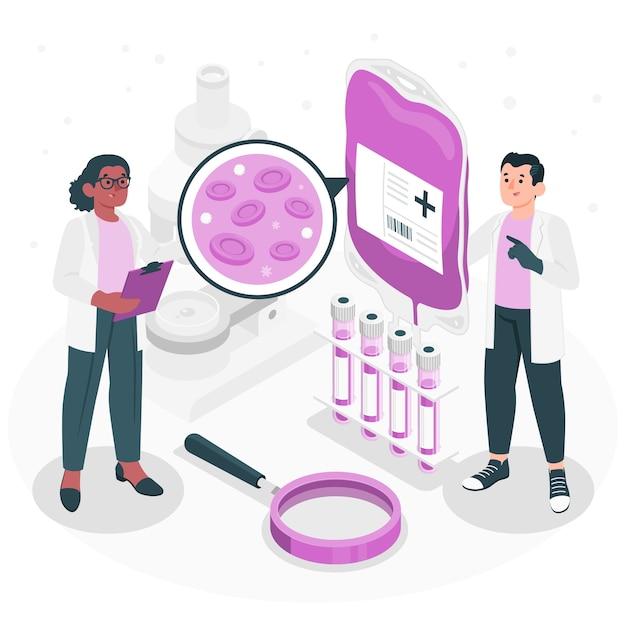Forensic science is a captivating field that combines science and investigative techniques to solve crimes. Among the various components that contribute to the success of forensic investigation, physical evidence holds a crucial position. In this blog post, we will explore the significance and elements of physical evidence in forensic science.
Physical evidence refers to any tangible objects or materials found at a crime scene or related to a criminal activity. These can include fingerprints, bloodstains, clothing, weapons, tire tracks, and even DNA samples. Forensic scientists meticulously collect, analyze, and interpret this evidence to reconstruct the events that occurred during a crime. By doing so, they often provide key insights and irrefutable facts necessary for legal proceedings.
Join us as we delve deeper into the role of physical evidence in forensic science, uncovering the importance of proper collection techniques and understanding how forensic scientists utilize this vital information. So, let’s begin this fascinating journey into the world of physical evidence and its significance in forensic investigations.

What is Physical Evidence in Forensic Science?
Physical evidence in forensic science refers to any tangible object or material that can be collected, preserved, and analyzed to help solve a crime or provide evidence in a legal proceeding. It plays a crucial role in understanding the who, what, when, where, and how of a crime, like a detective’s trusty sidekick. So, grab your magnifying glass, put on your detective hat, and let’s dive into the fascinating world of physical evidence in forensic science!
Types of Physical Evidence
Physical evidence can come in various forms, from microscopic fibers to gory bloodstains. It’s like a mixed bag of surprises, containing items such as:
Hair
No, not your roommate’s hair that seems to be everywhere at once, but hairs left at crime scenes can provide valuable clues about the perpetrator. Each hair holds microscopic characteristics, DNA, and even chemicals that can link a suspect to the crime.
Fingerprints
Ah, fingerprints, the unique patterns adorning our fingertips. These tiny swirls and ridges form an extraordinary form of identification that can tie a person directly to a crime. Just remember, criminals, gloves are not only stylish but also a great way to keep your identity hidden!
Bloodstains
Dripping blood might trigger a gag reflex at the sight of it on the floor, but for forensic scientists, it’s a goldmine of information. Bloodstain patterns can reveal where an attack occurred, how it happened, and even the type of weapon used. Plus, let’s not forget the DNA it contains, which can provide a positive identification of a suspect.
Firearms and Bullets
If you’ve ever wondered what it feels like to be Sherlock Holmes, then examining firearms and bullets might give you a taste of the thrill. Forensic ballistics analyzes guns, bullets, and cartridge cases, often using fancy terms like rifling marks and striations to link a firearm to a crime. Just remember, with great power comes great responsibility, so don’t go shooting random objects to play detective!
Toolmarks
No, this isn’t a slang term for your beloved hammer or power drill. In forensic science, toolmarks refer to the impressions left behind by tools that can help identify the instrument used in a crime. So, criminals, be mindful of leaving behind any incriminating marks when breaking and entering!
Documents
Although we might think of physical evidence as tangible objects, documents can also play a vital role in solving crimes. Handwriting analysis, deciphering altered documents, and examining paper and ink can all help uncover the truth. Beware forgers, your days of deceit could be numbered!
Collecting and Preserving Physical Evidence
Now that you know the exciting varieties of physical evidence, it’s essential to understand how it’s collected and preserved. The process is like playing a game of Operation, but instead of avoiding the buzzer, you’re avoiding contamination!
Documentation
The first step is to thoroughly document the crime scene. Photographs, sketches, notes, and measurements create a detailed record of the scene before any evidence is collected. Remember, a picture says a thousand words, but a poorly taken picture might say, “Is this evidence or abstract art?”
Packaging and Labeling
Once documented, each piece of evidence must be carefully packaged to prevent contamination or alteration. Proper containers, such as plastic or paper bags, can help preserve crucial clues. Don’t worry; we’re not suggesting you put your fingerprints on the evidence—latex gloves are a detective’s best friend!
Chain of Custody
Just like you wouldn’t lend your favorite detective novel to just anyone, the chain of custody ensures the integrity and security of evidence. Properly documenting each person who handles the evidence ensures that it remains untainted and admissible in court. Yes, it’s like playing a game of “Pass the Evidence Parcel,” but with more legal implications!
So, there you have it! Physical evidence in forensic science is like a treasure trove of clues, waiting to be discovered and analyzed. From hairs to fingerprints, bloodstains to toolmarks, each piece holds the potential to crack a case wide open. It’s like a real-life crime-solving adventure, minus the dramatic background music. So grab your magnifying glass, dust off the crime scene tape, and join the ranks of the forensic detectives!

FAQ: What is Physical Evidence in Forensic Science?
What is the importance of pricing in the marketing mix
In the realm of marketing, pricing plays a vital role. It’s not just about slapping a random number on your product and calling it a day. Pricing is an art that requires careful consideration and strategy. By setting the right price, you can position your product in the market, create value perception, and attract your target audience. It’s like finding that perfect balance between making profit and satisfying your customers. So, don’t underestimate the power of pricing in the marketing mix!
What is physical evidence service
Physical evidence service refers to the tangible elements surrounding your product or service that influence customers’ perceptions and experiences. It’s all about how things look, feel, and smell in your business environment. From the cleanliness of your store to the quality of your packaging, physical evidence can leave a lasting impression on your customers. So, make sure your physical evidence reflects your brand’s personality and values because, hey, appearance matters!
How do you collect physical evidence
Ah, the exciting part of forensic science! Collecting physical evidence is like being a detective on the hunt for clues. Forensic scientists employ various techniques to gather physical evidence at crime scenes. They meticulously document, photograph, and collect anything that may hold pertinent information. From bloodstained clothing to fingerprints on the window, every tiny detail counts. Remember, even the tiniest fiber or hair strand can crack a case wide open!
Why is pricing so important
Well, my friend, pricing is like the superhero cape of marketing. It can make or break your business. If you set your prices too high, you might scare away potential customers who think they can’t afford your product. On the other hand, if your prices are too low, people might question the quality or value of what you offer. It’s essential to strike the right balance, consider market trends, competitor pricing, and customer expectations. So, put on your pricing superhero cape and save the day for your business!
Why is physical evidence important in the marketing mix
Ah, physical evidence, the unsung hero of the marketing mix! Physical evidence plays a crucial role in shaping customer perceptions, building trust, and creating memorable experiences. Think about it: when you walk into a fancy restaurant with dim lighting, elegant furniture, and artfully arranged plates, you’re immediately immersed in a holistic dining experience. That’s the power of physical evidence. It sets the stage and helps your customers form opinions about your brand. So, pay attention to those physical cues and create an unforgettable show for your customers!
What are the elements of physical evidence
Now, let’s uncover the hidden ingredients of physical evidence, shall we? We’re talking about all the tangible bits and bobs that make up the environment where your product or service lives. It includes your storefront, signage, website design, product packaging, uniforms worn by your employees, and even the aroma that wafts through your store. All of these elements contribute to the overall customer experience and leave a lasting impression. So, sprinkle some magic into your physical evidence mix!
What do forensic scientists do with physical evidence
When forensic scientists get their hands on physical evidence, it’s like Christmas morning for them. They perform a series of tests, examinations, and analyses to uncover the truth hiding within. Let’s say they find a strand of hair at a crime scene. They can examine its microscopic details, analyze its DNA, and compare it with potential suspects. It’s like assembling a puzzle until the full picture emerges. So, next time you leave a piece of evidence behind, just remember that forensic scientists are ready to solve the case!
What is the purpose of physical evidence
Ah, the purpose of physical evidence is to paint a vivid picture for your customers. It helps create a seamless and enjoyable experience. When your physical evidence is on point, your customers feel reassured, confident, and compelled to choose your brand. Imagine walking into a hotel with luxurious furnishings, spotless rooms, and friendly staff. It sets the mood and tells you that you’re in for a fabulous stay. So, make sure your brand’s physical evidence is ready to roll out the red carpet!
What is service evidence
Service evidence is like the secret sauce that adds flavor to your customer’s experience. It’s those intangible clues that give customers a sense of your service quality. It can take the form of testimonials, online reviews, personal recommendations, or even the way your employees interact with customers. Remember, a genuine smile goes a long way! Service evidence helps build trust and confidence in your brand, so sprinkle it generously throughout your customer journey!
What is physical evidence in forensic science
Hello, Sherlock Holmes! Physical evidence in forensic science refers to all the objects, substances, and traces left behind at a crime scene. Think of it as the breadcrumbs that criminals unintentionally drop. It can include bloodstains, fingerprints, fibers, weapons, and even soil samples. Forensic scientists collect, analyze, and interpret this physical evidence to reconstruct the crime and identify the culprits. It’s like playing a real-life game of Clue, but with much higher stakes!
